Brewing Beer with Rye Malt
Published: August 7, 2025 at 11:40:26 AM UTC
Brewing beer with rye malt is gaining popularity among brewers. It offers a unique flavor profile. Rye malt adds a spicy, grainy taste that can enhance the complexity of various beer styles. When used as a base malt, rye malt brings a bold flavor. Brewers find that this rustic grain makes beer flavorful and highly drinkable. The key is using it correctly.
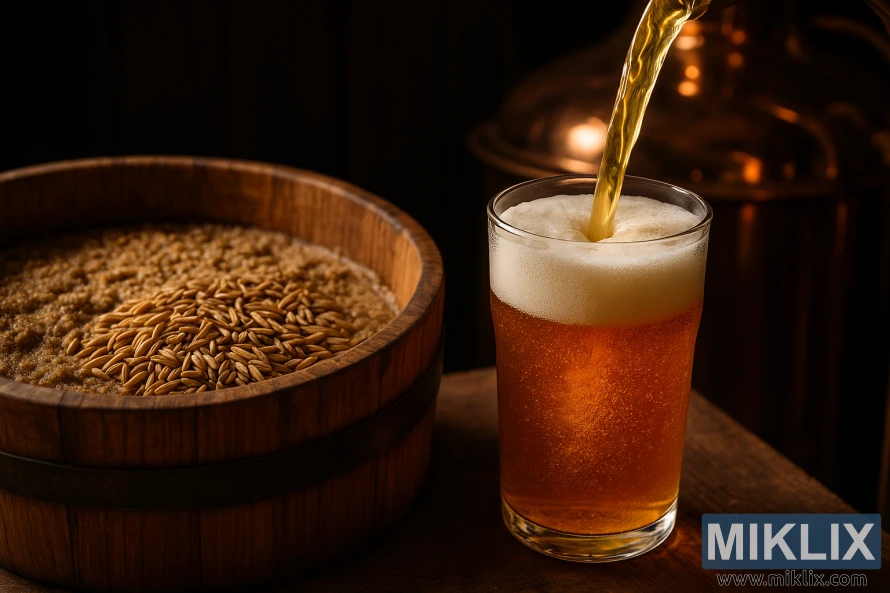
Key Takeaways
- Rye malt adds a spicy, grainy character to beer.
- It can be used as a base malt in brewing.
- Proper brewing techniques are essential to balance its bold flavor.
- Rye malt contributes to creating flavorful and drinkable beers.
- Its unique flavor profile can enhance various beer styles.
Understanding Rye Malt: The Fundamentals
For brewers eager to explore new flavors, grasping the basics of rye malt is essential. Rye malt is derived from rye, a cereal grain renowned for its distinct taste and brewing properties.
The malting process of rye grains is what gives rye malt its spicy, grainy flavor. This process activates enzymes that convert starches into fermentable sugars. The malt, then, enriches beer with depth and complexity.
Rye malt's unique taste makes it a prized ingredient in brewing. It imparts a bold, complex flavor to beer, using a blend of pale, caramel, and roasted rye malts. Its versatility allows it to enhance various beer styles, adding a distinctive twist.
Mastering rye malt's brewing fundamentals is key. It involves understanding its interaction with other ingredients and its impact on the brewing process. Its high enzyme content can alter the mash, necessitating adjustments in the brewing technique.
- Rye malt adds a spicy flavor to beer.
- It contributes to a fuller body due to its complex sugars.
- Rye malt can be used as a base malt or as a specialty malt.
By mastering these fundamentals, brewers can unlock rye malt's full flavor and create unique, delicious beers.
The Distinctive Flavor Profile of Rye Malt
Rye malt introduces a bold, complex taste to beer, often highlighted by peppery and grainy notes. This unique flavor comes from rye grain's distinct properties. It's known for its bold, spicy taste.
The taste of rye malt is slightly peppery, not outright spicy. This adds a layer of complexity to the beer. It's a favorite among brewers aiming to craft beers with a unique twist.
The grainy notes in rye malt also enrich the beer's flavor profile. They provide a malty backbone. When mixed with other ingredients, rye malt can create a balanced, complex taste experience.
Brewers can enhance the flavor of rye malt in several ways:
- Pairing rye malt with hops that have complementary flavors, like earthy or floral notes.
- Using specialty malts to add more complexity to the beer.
- Adjusting the brewing process to highlight the desired rye malt characteristics.
Understanding rye malt's unique flavor profile and how to work with it allows brewers to craft a variety of unique, delicious beers. These beers showcase the versatility of this ingredient.
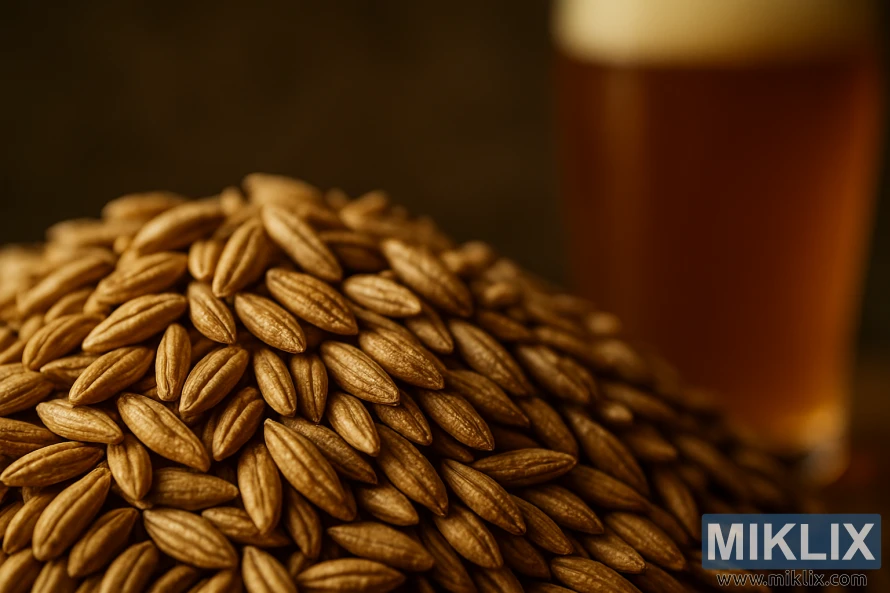
Types of Rye Malt Available for Brewing
Brewers have a variety of rye malts to choose from, including pale, caramel, and roasted types. This range offers a wide array of flavors and styles, meeting diverse brewing needs and tastes.
Pale, caramel, and roasted rye malts are the most common in brewing. Pale rye malt acts as a base, providing a foundation for various beer styles. It introduces a spicy, grainy taste, typical of rye beers.
Caramel rye malt, by contrast, adds a sweet, malty complexity to beers. It's used to enrich the flavor of brews, adding depth and a caramelized sugar hint. Roasted rye malt, with its deep, roasted taste, is perfect for darker beers, mirroring roasted barley's robust character.
- Pale rye malt: Used as a base malt, it provides a spicy and grainy flavor.
- Caramel rye malt: Adds a rich, malty sweetness and complexity.
- Roasted rye malt: Contributes a deep, roasted flavor, ideal for darker beers.
Knowing the characteristics of each rye malt type is essential for brewers aiming to achieve specific flavors in their beers. By choosing the right rye malt, brewers can create unique, complex beers. These showcase the versatility of rye in brewing.
Comparing Rye Malt to Other Base Malts
When comparing rye malt to barley and wheat, we see notable differences in brewing and flavor. Rye malt brings a spicy, grainy taste, unlike barley's cleaner sweetness or wheat's smooth, sweet character. These distinctions are key in shaping a beer's style and taste.
Brewers must weigh these differences when choosing a base malt. Here are the main distinctions between rye malt and other base malts:
- Flavor Profile: Rye malt introduces a complex, spicy flavor, unmatched by barley or wheat malts.
- Body and Mouthfeel: Rye malt can create a drier, more refreshing mouthfeel, contrasting with barley or wheat malt's fuller feel.
- Brewing Characteristics: Rye malt's lower enzymatic power makes it more challenging to work with, often requiring brewing adjustments.
Rye malt's lower diastatic power compared to barley means it may not convert starches as efficiently during mashing. This could result in a beer with a distinct character. Brewers might need to add malts with higher diastatic power to achieve the desired gravity and fermentability.
The choice between rye, barley, and wheat malts hinges on the brewer's vision for the beer's flavor and style. For those aiming to add depth and a unique twist, rye malt stands out as a compelling option against traditional base malts.
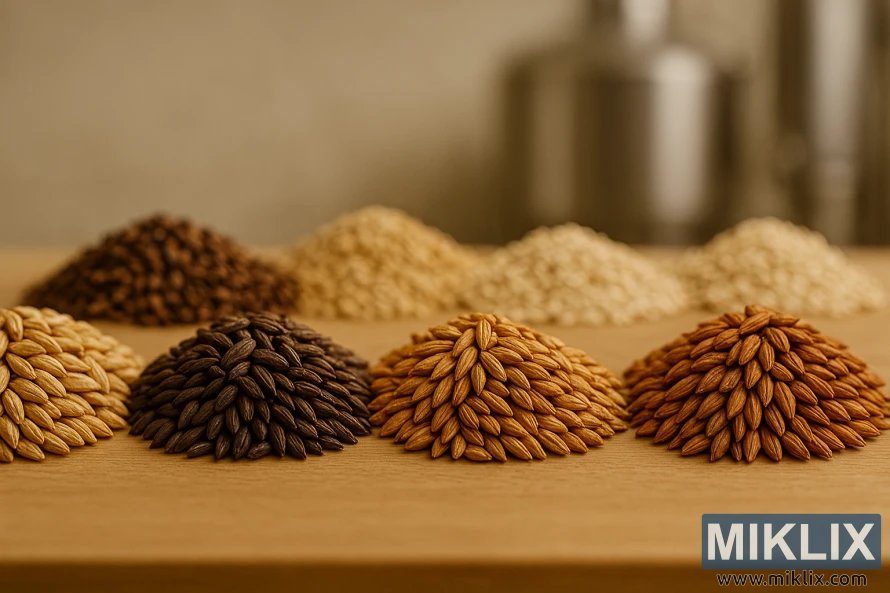
The Impact of Rye Malt on Beer Body and Mouthfeel
Brewing with rye malt introduces a distinct mouthfeel to beer, attributed to its unique composition. Beta-glucans, present in rye, significantly contribute to a beer's viscosity and overall body. This is a key factor in the beer's mouthfeel.
Rye contains more beta-glucans than other grains, leading to beers with an oily or viscous texture. This special mouthfeel is a defining feature of rye beers. It makes them stand out from other styles.
The impact of rye malt on beer body can be managed by brewers through several techniques:
- Adjusting the percentage of rye malt in the grain bill to achieve the desired viscosity.
- Utilizing specific mashing techniques to break down beta-glucans and other complex molecules.
- Selecting yeast strains that are capable of handling the unique characteristics imparted by rye malt.
By understanding and controlling these factors, brewers can create a wide range of beer styles. These styles showcase the distinctive qualities of rye malt. They can range from crisp, dry finishes to rich, full-bodied experiences.
Optimal Percentage of Rye Malt in Different Beer Styles
Finding the right amount of rye malt is key to perfecting the taste in various beers. The amount used can greatly change the beer's taste, making it vital to know the best amounts for each style.
In rye IPAs, a higher rye malt percentage is common to enhance the spicy and grainy notes. Brewers usually add between 20% to 40% rye malt. This balance brings out the hoppy flavors.
On the other hand, rye porters often use less rye malt to keep the rich, roasted flavors in the forefront. A 10% to 20% rye malt range is typical. It adds a subtle complexity without overpowering the beer.
For Summer Rye PAs, brewers might use about 7% crystal malt with rye malt. This combination creates a refreshing beer where the rye complements the other flavors. It shows how versatile rye malt can be in different beers.
Experimenting with different rye malt percentages is essential to find the perfect balance for each beer style. By understanding how different amounts affect the flavor, brewers can create unique and engaging beers.
Managing the Brewing Process with Rye Malt
The brewing process with rye malt requires meticulous attention, focusing on mashing, lautering, and sparging. Rye malt's high beta-glucan content can cause lautering issues if not managed correctly.
Mashing is a critical step in brewing with rye malt. A beta-glucan rest is often recommended to break down rye's complex cell walls, improving lautering efficiency. This involves holding the mash at a specific temperature, typically around 113°F to 122°F (45°C to 50°C), for a period before proceeding to the saccharification rest.
Effective lautering is essential when brewing with rye malt. The high beta-glucan content can make the mash viscous, leading to stuck mashes or slow lautering. To mitigate this, brewers can use a lauter tun with adequate grain bed depth and ensure the grain is milled appropriately. Using a mash filter or a lauter tun with a robust design can also improve lautering efficiency.
Sparging is another critical step in the brewing process with rye malt. It's vital to sparge slowly and evenly to avoid channeling through the grain bed, which can result in poor extraction efficiency. The sparge water should be hot, but not too hot, to prevent extracting unwanted compounds from the grain.
To manage the brewing process effectively, brewers should also consider the following tips:
- Use a higher mash temperature to improve lautering.
- Monitor the mash and lauter tun for signs of stuck mashes or slow lautering.
- Adjust the grist composition to optimize the grain bill for rye malt.
- Ensure that the brewing equipment is clean and well-maintained to prevent contamination and other issues.
By understanding the intricacies of the brewing process and implementing the right techniques, brewers can successfully produce high-quality beers using rye malt. With careful attention to mashing, lautering, and sparging, brewers can unlock the unique flavor and character that rye malt has to offer.
Popular Beer Styles Featuring Rye Malt
Several beer styles have gained popularity thanks to rye malt. Its unique spicy and grainy flavor has become a staple in brewing. This has enriched the taste of various recipes.
Roggenbier, a traditional German style, is well-known for its use of rye malt. This dark, wheat-like beer boasts a pronounced rye spice flavor and a smooth, malty backbone. The rye malt in roggenbier adds a distinctive dryness and complex flavor, distinguishing it from other lagers.
The saison style also often includes rye malt. While traditional saisons are known for their dryness, modern interpretations add rye malt for depth and spice. This rye malt enhances the beer's complexity, making it more intriguing to the palate.
Rye pale ales and IPAs have also gained popularity. The addition of rye malt to these hop-forward beers adds complexity, balancing bitterness with a subtle spice flavor. This style is a favorite among those who enjoy IPA bitterness but seek something different.
In summary, rye malt is a versatile ingredient in various beer styles. From traditional roggenbier to modern rye IPAs, it adds a unique dimension to flavor and character. As brewers continue to experiment, we can expect more innovative uses of rye malt in the future.
- Roggenbier: A traditional German beer style known for its rye spice flavor.
- Saison: A farmhouse ale that can include rye malt for added complexity.
- Rye Pale Ale/IPA: Modern beer styles that balance hoppy bitterness with the spice of rye malt.
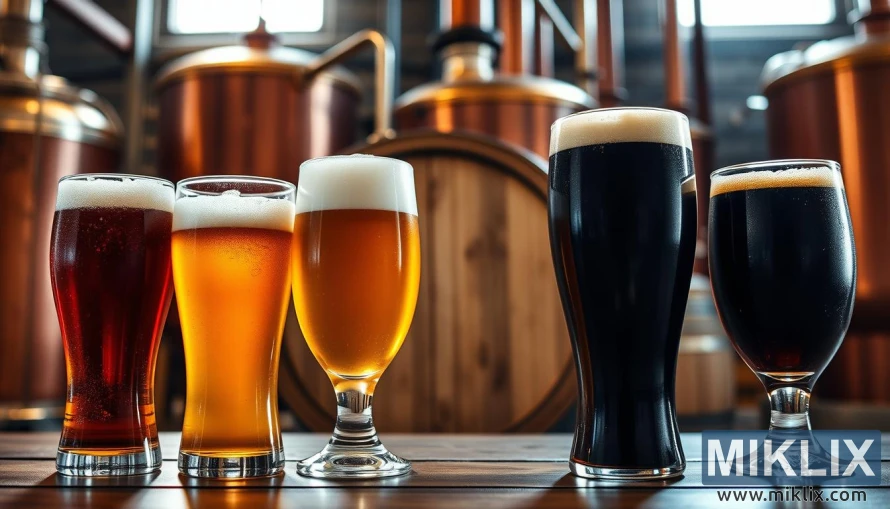
Troubleshooting Common Issues When Brewing with Rye
Rye malt brings complexity to beer, but it also poses brewing challenges. Brewers often face issues like stuck mash and slow lautering with rye malt. It's essential to grasp these challenges and their solutions for successful brewing.
One major concern with rye malt is the risk of a stuck mash. This happens because rye has a high percentage of pentosans. These can gel and block wort flow. To tackle this, brewers can take several steps:
- Use a higher mash temperature to enhance enzyme activity and break down pentosans.
- Add enough rice husks or other lautering aids to aid wort flow.
- Ensure the mash is well-hydrated to prevent it from becoming too thick.
Slow lautering is another issue with rye malt brewing. It's caused by pentosans gelling during lautering. To overcome slow lautering, brewers can:
- Choose a lauter tun with a strong design for thicker mashes.
- Slowly recirculate the wort to avoid compacting the grain bed.
- Keep a close eye on the lautering process, adjusting flow rates as needed.
By understanding the brewing challenges with rye malt and applying these strategies, brewers can successfully overcome them. This leads to producing high-quality beers with unique flavors.
Equipment Considerations for Rye Malt Brewing
Rye malt brewing requires specific equipment to handle its unique traits. Unlike other malts, rye malt poses challenges during brewing, mainly in lautering and mash filtration.
The mash tun is a critical piece of equipment. A well-designed mash tun is essential for managing the thicker, more viscous mashes rye malt produces. Brewers need a mash tun that facilitates efficient lautering and can handle the increased mash volume.
The lauter tun is also vital. Rye malt's high beta-glucan content can cause lautering issues. A lauter tun with a strong filtration system is necessary. Some brewers opt for a lauter tun with a false bottom or screens to enhance filtration and avoid stuck sparges.
Sanitation and cleanliness of equipment are also important. Rye malt, like any ingredient, can be prone to contamination if equipment isn't sanitized properly. Keeping all equipment clean and sanitized helps prevent spoilage and off-flavors in the beer.
Here are some key equipment considerations for rye malt brewing:
- A well-designed mash tun for efficient lautering
- A lauter tun with a robust filtration system
- Proper sanitation and cleanliness practices
By choosing and maintaining the right equipment, brewers can overcome rye malt's challenges. This allows them to produce high-quality beers that highlight its unique flavor.
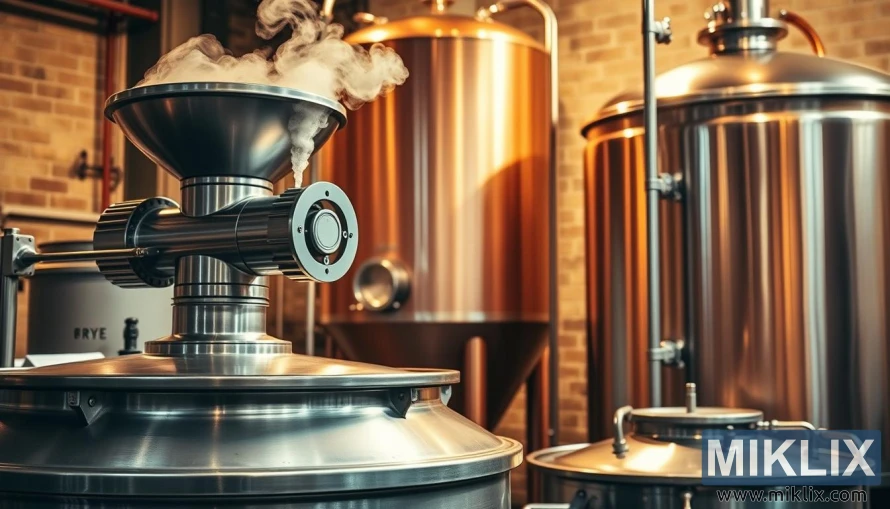
Storage and Handling of Rye Malt
Proper storage and handling of rye malt are critical for maintaining its quality and brewing performance. Rye malt, known for its distinctive flavor and brewing characteristics, requires specific conditions to preserve its integrity.
To maintain the freshness and quality of rye malt, controlling moisture levels is essential. High humidity can cause clumping and the growth of unwanted microorganisms. Store rye malt in a cool, dry place, away from direct sunlight and moisture.
- Keep the storage area clean and free from pests.
- Use airtight containers to store rye malt, minimizing exposure to air.
- Monitor storage conditions regularly, checking for signs of moisture or spoilage.
By following these guidelines, brewers can ensure that their rye malt remains in optimal condition. This is ready for use in brewing a variety of beer styles. Proper storage and handling practices are foundational to producing high-quality beers that showcase the unique characteristics of rye malt.
Creating Your First Rye Malt Recipe
Creating your first rye malt recipe requires balancing the bold flavors of rye with complementary ingredients. Rye malt adds a unique spicy and grainy character to beer. This can be both an opportunity and a challenge. The key is to understand how rye malt interacts with other brewing components and design a recipe that showcases its distinctive qualities.
Choosing the right type of rye malt is the first step in crafting a successful recipe. Rye malt comes in various forms, including flaked rye and rye malt extract. Each offers different advantages. Flaked rye can add a robust rye flavor, while rye malt extract provides a more subtle character.
Balancing flavors is critical when brewing with rye malt. The spicy and grainy notes of rye can be complemented by other ingredients like hops and specialty malts. For example, a moderate hop addition can help balance the bold flavors of the rye. Incorporating specialty malts like crystal or caramel malt can add depth and complexity to the beer.
To create a well-rounded rye malt recipe, consider the following tips:
- Start with a base malt that complements the rye, such as a pale or pilsner malt.
- Experiment with different hop varieties to find the right balance of bitterness and flavor.
- Consider adding specialty malts to enhance the beer's complexity.
- Keep the yeast strain in mind, as some yeasts can accentuate or mute certain flavor characteristics.
For inspiration, look to existing rye beer recipes like Rongoteus. It showcases the complex and bold taste of rye. By understanding the characteristics of rye malt and how to balance its flavors, you can create a unique and compelling beer. This beer will highlight the best qualities of this versatile ingredient.
Commercial Examples of Rye Malt Beers
Craft breweries have embraced rye malt, incorporating it into a range of beer styles. This includes IPAs to porters, creating complex, flavorful brews. The use of rye malt has led to the development of unique and exciting beers. These showcase its distinctive characteristics.
Rye IPAs are a popular example. Breweries leverage the spicy, grainy flavor of rye to create hoppy, full-bodied beers. For instance, the Summer RyePA is noted for its citrus character. It is considered one of the better session IPAs. The incorporation of rye malt adds depth and complexity to the traditional IPA style.
Rye porters are another style that benefits from the inclusion of rye malt. The robust, malty flavor of porters is enhanced by the spicy undertones of rye. This creates a rich and complex beer. These beers are perfect for those who enjoy a deeper, more nuanced porter experience.
Some notable commercial examples include rye IPAs from breweries that have successfully balanced the bold flavors of hops with the unique characteristics of rye malt. Rye porters have also gained acclaim for their layered flavor profiles. These are attributed in part to the use of rye.
- Rye IPAs offer a hoppy, full-bodied experience with a spicy twist.
- Rye porters provide a complex, robust flavor profile.
- Breweries continue to experiment with rye malt, pushing the boundaries of beer styles.
These commercial examples demonstrate the versatility and versatility of rye malt in brewing. As craft breweries continue to innovate, we can expect to see even more exciting beers. These will feature rye malt as a key ingredient.
Conclusion
Brewing with rye malt opens up a world of complex and flavorful beers. Understanding its unique flavor profile is key. This knowledge allows brewers to explore new possibilities in their craft.
This article has shown how the type and amount of rye malt used can change a beer's character. It's essential to experiment with different styles and manage the brewing process well. These steps are vital for mastering rye malt brewing.
The possibilities for innovation with rye malt are endless. Its untapped use in beer invites brewers to explore new territories. By embracing this challenge, brewers can create new and exciting recipes. This will further showcase their skill and creativity in the art of brewing.
Further Reading
If you enjoyed this post, you may also like these suggestions:
